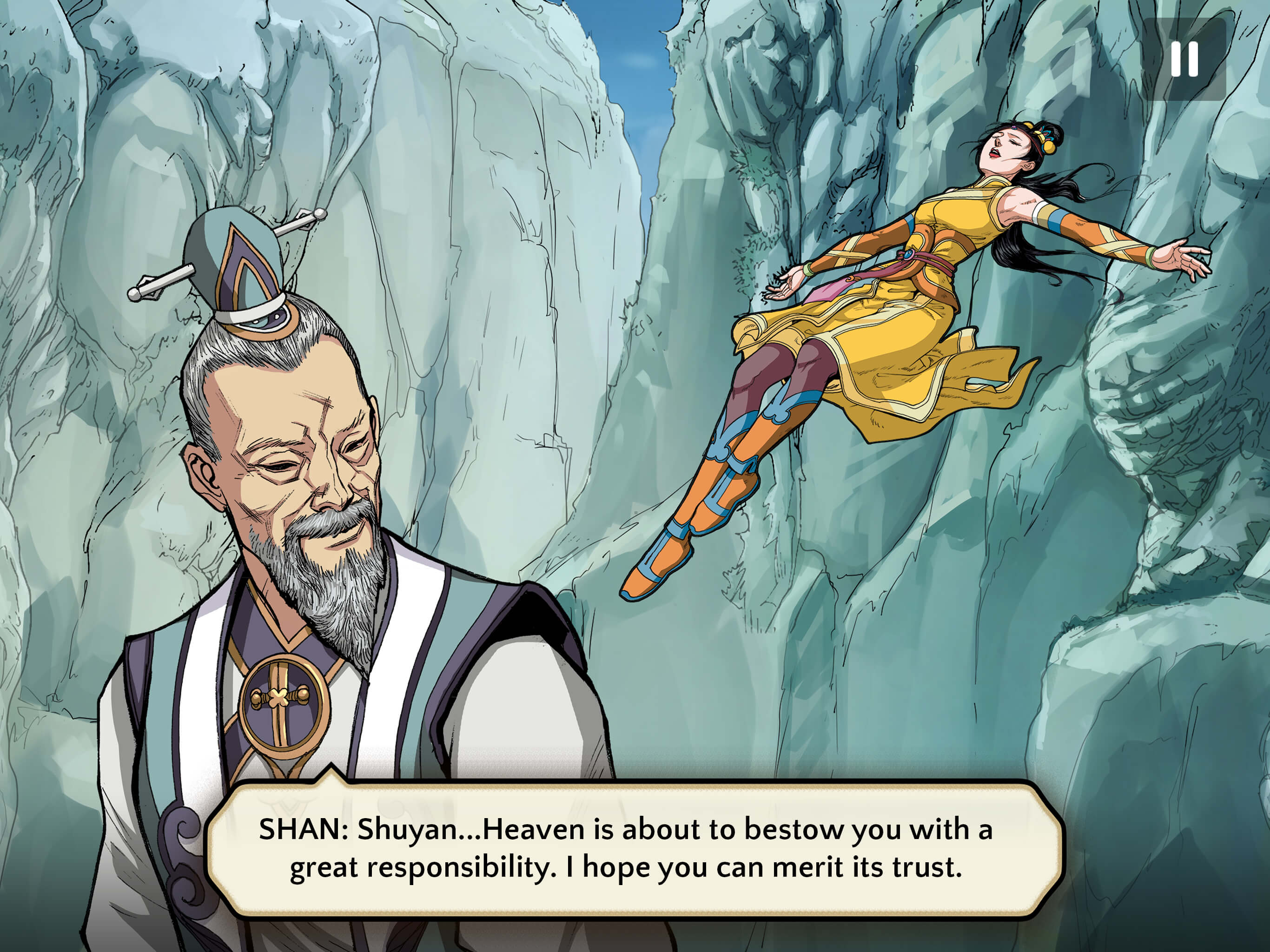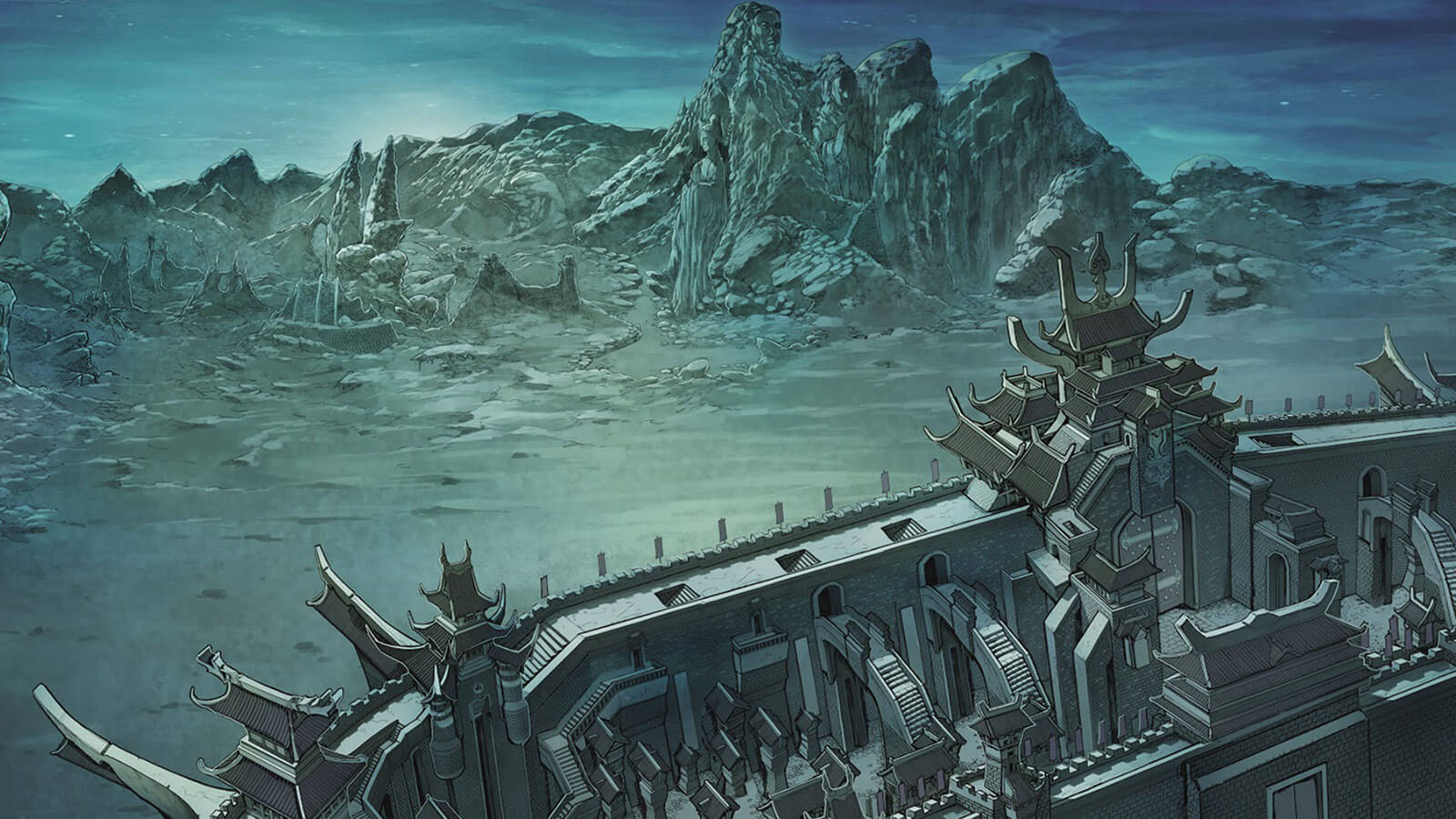Shuyan Saga review — An interactive graphic novel
Shuyan Saga is an ‘action graphic novel’ from Lofty Sky Entertainment, a company that produces narratives in the form of television, film and games.
It’s a game that experiments with form and bends genre, providing many different modes of engagement. The story is delivered not through cutscenes in the traditional sense, but through dialogue juxtaposed with still images. Shuyan Saga is illustrated stunningly, with incredible attention to detail and gorgeous environments. The developers were not sparing with these images either — there are well over a thousand art panels throughout the entirety of the game. As I played, I sometimes found myself pausing just to get a closer look at the drawings.
The images come with dialogue that is both voiced and displayed visually on screen. Each actor’s voice, as well as their scripted lines, give the characters very strong and distinct personalities. In the shoes of the protagonist, Shuyan, you can choose from several dialogue options in some moments; your words of choice have relatively little impact on the story itself, but serve to further your investment in it. The cast of characters is compelling, and there are plenty of people to get attached to. While the lines may feel a little cheesy sometimes, Shuyan Saga compensates for it with an endearing level of sincerity.

The other major component of the game is its combat, which departs from the 2D nature of the narrative component. All of the combat gameplay is 3D, and while the hand-drawn illustrations are gorgeously detailed, the combat looks and feels markedly clunkier. The low-poly character models seem a bit generic, but they get the job done. With its simple appearance, I wasn’t expecting the combat mechanics to be particularly fluid, but I found that the gameplay was quite original, thoroughly engaging and complex enough to make me want to keep fighting and try new things.
It’s worth noting that Shuyan Saga is available on mobile as well as PC, so the mechanics may function differently from platform to platform. As I was playing on my laptop, I found that the process of swiping and clicking with a mouse attached to the USB port was quite satisfying. However, when I tried to replicate those movements on my laptop’s trackpad, the gameplay became quite frustrating. I imagine that the mechanics function much better on a touchscreen.
In terms of narrative itself, Shuyan Saga has a lot going for it. Most of the characters are easy to like and even easier to root for. The story, as the name suggests, follows the journey of Shuyan, a young princess thrust into an unexpected war. As her people flee from a tyrant invading their homeland, she must rise to the occasion and learn how to save her kingdom. In her journey to gain allies and hone her fighting skills, she comes across several unlikely friends, each of whom has a new perspective to add to the story.
Several of the supporting cast are less fortunate than Shuyan, and they have no qualms about holding up a mirror to her privilege. This is something refreshing in a game, though I do wish that there had been a few more moments of self-reflection from Shuyan that gave her the chance to acknowledge her uniquely sheltered royal background. However, Shuyan Saga does so many other things well, and offers such a unique narrative form, that the mediocre class commentary is easy to look past.

I also found it particularly exciting to play such a well-crafted game both featuring East-Asian culture and created by several East-Asian artists. This sort of representation in the narrative and the studio can be rare in the entertainment industry, and it’s clear that Shuyan Saga benefited from the team’s personal ties to the content. In all, I can’t recommend this graphic-novel gaming experience enough.
Shuyan Saga is available on Steam, Google Play and the Apple App Store.
Comments are closed.